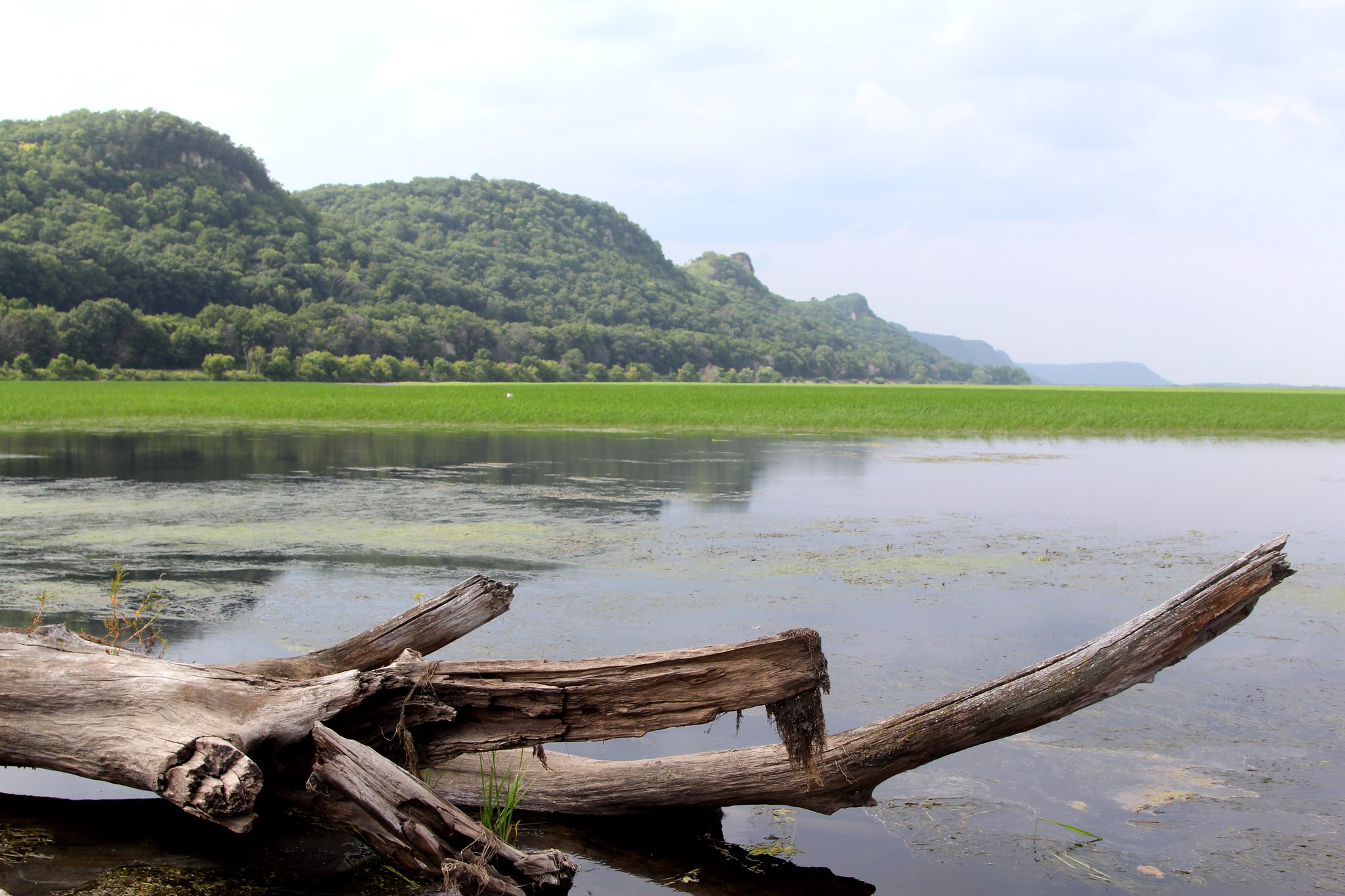What's a Watershed
By Greta Solbrig on August 22, 2024 in Blog

A Mississippi River pool, photo by Larry Reis
If you live near the Mississippi River, you have probably noted its impressive length, spanning from Minnesota to Louisiana. Less commonly known is how far water has traveled to get to that point. The Mississippi River’s watershed is the biggest in the United States, spanning from the Rockies to the Allegheny Mountains.
But what is a watershed? A watershed describes the land surface that drains to a particular water body. The boundaries of watersheds are created by earth’s physical features which vary in height and direction. Peaks and valleys funnel water along the landscape, all converging together into a bigger stream, pond or lake. You can imagine watersheds like trees with outstretched limbs — each limb has branches of its own, but all are part of the same tree. In this way, watersheds can create connections to different places, and in the case of the Mississippi, different states!
Watersheds are categorized by hydraulic unit codes (HUCs), which denote their size. When you zoom in, large watersheds are composed of many smaller watersheds. Though these watersheds are categorized into separate units, they are all connected.
This connectivity is why watersheds are so important. Many carry fresh water over long distances, thus essential to life across the globe. Watersheds provide food security, outdoor recreation opportunities and a variety of ecosystem services. All of this, however, is threatened by our actions on land. Eventually, what happens on the land ends up in the water. This is evidenced every time there’s a chemical spill or by the growing dead zone in the Gulf of Mexico.
On a smaller scale, anything that enters your local storm drains (soapy water from washing cars, lawn chemicals, road salt, or anything else that happens in yards or on the roads) travels directly, untreated, to the nearest stream. In this way, whatever washes into your storm drain washes into your local watershed.
Watershed awareness is crucial to safeguarding wetland, river and lake habitats. Knowing how your water traveled to reach you and where it’s going next, helps connect us with all the other parts of the system that depend on clean water. With proper care, healthy watersheds can keep us connected to nature as well as each other.
We all know it’s good to conserve water where we can, but there are many other actions you can take related to watershed awareness:
- Learn what watershed you live in https://water.usgs.gov/wsc/map_index.html or follow the path of a water droplet from any point in the United States https://river-runner.samlearner.com/
- Wash your cars at a designated car wash as any wastewater has to be routed to a treatment facility
- Help keep leaves and other debris out of your neighborhood storm drains so they can work properly
- Consider reducing or eliminating the use of pesticides or fertilizers on your lawn
- Follow best practices for applying salt to your driveway in the winter – you only need about one coffee mug’s worth to treat an entire 20 foot driveway!
- Properly dispose of household chemicals – not down the drain!
- Consider participating in community science projects to gather stream health and water quality data - https://www.iwla.org/water/stream-monitoring is a great place to start